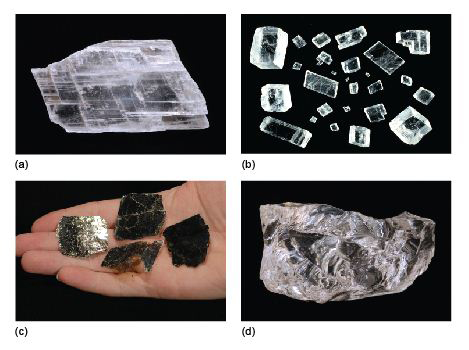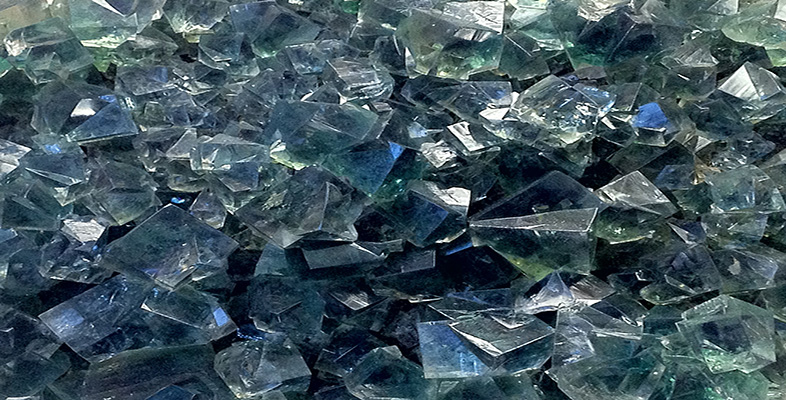1.3.4 Cleavage
If a crystal is struck with a hammer, it will probably shatter into many pieces. Some minerals, such as calcite (cf. Digital Kit), break into well-defined blocky shapes with flat surfaces. These are called cleavage fragments (Figure 10a and b) and the flat surfaces are called cleavage planes. Note that cleavage planes, which occur within a crystal, are not the same as crystal faces.
Cleavage arises when the crystal structure contains repeated parallel planes of weakness (due to weak chemical bonds), along which the crystal will preferentially break. The mineral mica (which includes biotite and muscovite (cf. Digital Kit)) has such perfect cleavage in one direction that it can be readily split, or cleaved, into wafer-thin sheets (Figure 10c), using just a fingernail. Some minerals break into irregular fragments that lack flat surfaces (except for any remnants of original crystal faces). In the case of quartz (Figure 10d and Digital Kit), which has no cleavage, the broken pieces have a curved fracture pattern, called conchoidal (pronounced 'con-koi-dal') fracture. Some minerals have only one set of cleavage planes, others have two sets, and a few (such as calcite) have three. In minerals with only one or two sets of cleavage planes, some broken surfaces will show just fracture.

